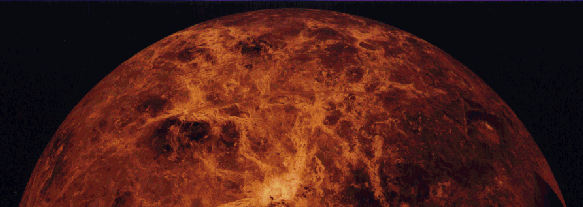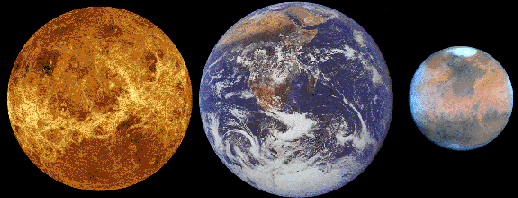VENUS: Earth's Evil Twin

 Venus is the goddess of love and beauty, so named probably because
it is the brightest of the planets. Only the Sun and Moon
are brighter. Venus is often incorrectly referred to as the
``morning star'' or the ``evening star'', depending on whether
it is leading or trailing the Sun in the sky.
Venus is the goddess of love and beauty, so named probably because
it is the brightest of the planets. Only the Sun and Moon
are brighter. Venus is often incorrectly referred to as the
``morning star'' or the ``evening star'', depending on whether
it is leading or trailing the Sun in the sky.
However, her beauty is only skin deep. Below the dense shroud of clouds lies the most extreme hell known in our solar system. The surface temperature of Venus, 750 K (477 C, 891 F), is great enough to melt lead. In more respects than not, Venus is similar in characteristics to Earth (mass, radius, geology and chemistry). What went wrong?

The Atmosphere
The key is the atmosphere: a greenhouse effect
gone bizzerk! Venus shows us how powerful this effect can be,
heating the planet 500 K (almost 1000 F) above what
it's equilibrium temperature would be without an atmosphere.

Comparing the properties of Venus, Earth and Mars we learn the secret of being just the right distance from the Sun. This will be an important issue when we search for hospitable planets orbiting other stars.